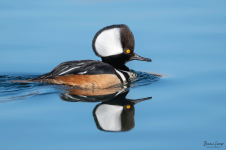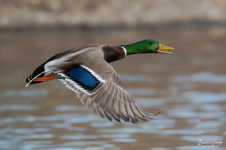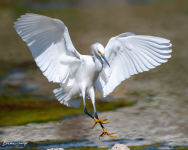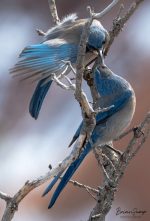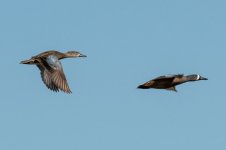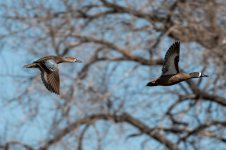Hey all, first post here.
I've had a love for birds since I was a kid (namely eagles) and embarked on a bird photography journey late last year. Started with a Nikon D3500 and added a Tamron 150-600 in December. Realized I needed more firepower so in March upgraded to a D500. The beginning of April I ordered the Sigma 500mm f4, after extensive research, and glad I did.
Here are a few photos I captured recently. Although I have been studying and practicing extensively, I do have some specific questions and hope you can help.
1. For those of you who are the birds-in-flight photo pros (the elite exist in every forum, you know who you are), what is your keeper capture rate for birds in flight? For instance, you are shooting waterfowl (let's say teal and mallards) and you rip off a 10 shot clip with a bank or series of trees behind. How many would you say are in focus - and I mean even if you miss the eye, at least some part is in focus?
I feel like I'm not getting but 2-3/10 right now. Many are just slightly off; definitely not near tack sharp eyes, but it's not like I'm getting a wing or tail feathers in focus either. Nor is the bird grossly out of focus... it's just slightly, making me feel like I didn't miss completely (you can tell when you miss as the subject looks like a blurry blob).
With large raptors, I will probably get 6/10 or 7/10 manageable and 4-5 are tack sharp in the eye in decent light.
I feel like maybe I need to calibrate AF or change a couple settings, but I don't know how. I hear people talk about back focus and calibrating lenses to the body, but not sure how.
CURRENT SETTINGS:
Using back-button AF with AF-C.
AF-ON button (3D - tried this out yesterday, worked decent in certain contrast situations but had to use single point first to acquire a focus), PV button (single point - I use this often for raptors and larger, slower birds), Fn1 (group AF - use this sparingly but thinking I should more).
Matrix metering
Auto white balance
Manual mode, auto ISO
- Shutter button does not need focus to release
- Tracking set on moderate (not erratic usually) and set on 3/5 for refocusing
2. For those who shoot faster moving subjects, are you using dynamic 21 pt or group AF with greater success?
3. If you are acquiring focus on an object already in flight after it catches your eye, which AF button or setting are you using to acquire a lock most rapidly?
4. When you have multiple subjects in the frame (i.e. several birds in the water ranging in depth of approx 2 ft variation in focal distance) how do you get them all in focus? I am using a 500mm lens and I know this compresses the image greatly, but do I need to get up to f9 or f11 to spread the dof enough? More?
BTW, I am using a watermark in my images - not because I want to be a poser. I just found people sharing my pictures all over social media so I thought it may be prudent. I've also started selling work so perhaps it was a natural requisite.
I've had a love for birds since I was a kid (namely eagles) and embarked on a bird photography journey late last year. Started with a Nikon D3500 and added a Tamron 150-600 in December. Realized I needed more firepower so in March upgraded to a D500. The beginning of April I ordered the Sigma 500mm f4, after extensive research, and glad I did.
Here are a few photos I captured recently. Although I have been studying and practicing extensively, I do have some specific questions and hope you can help.
1. For those of you who are the birds-in-flight photo pros (the elite exist in every forum, you know who you are), what is your keeper capture rate for birds in flight? For instance, you are shooting waterfowl (let's say teal and mallards) and you rip off a 10 shot clip with a bank or series of trees behind. How many would you say are in focus - and I mean even if you miss the eye, at least some part is in focus?
I feel like I'm not getting but 2-3/10 right now. Many are just slightly off; definitely not near tack sharp eyes, but it's not like I'm getting a wing or tail feathers in focus either. Nor is the bird grossly out of focus... it's just slightly, making me feel like I didn't miss completely (you can tell when you miss as the subject looks like a blurry blob).
With large raptors, I will probably get 6/10 or 7/10 manageable and 4-5 are tack sharp in the eye in decent light.
I feel like maybe I need to calibrate AF or change a couple settings, but I don't know how. I hear people talk about back focus and calibrating lenses to the body, but not sure how.
CURRENT SETTINGS:
Using back-button AF with AF-C.
AF-ON button (3D - tried this out yesterday, worked decent in certain contrast situations but had to use single point first to acquire a focus), PV button (single point - I use this often for raptors and larger, slower birds), Fn1 (group AF - use this sparingly but thinking I should more).
Matrix metering
Auto white balance
Manual mode, auto ISO
- Shutter button does not need focus to release
- Tracking set on moderate (not erratic usually) and set on 3/5 for refocusing
2. For those who shoot faster moving subjects, are you using dynamic 21 pt or group AF with greater success?
3. If you are acquiring focus on an object already in flight after it catches your eye, which AF button or setting are you using to acquire a lock most rapidly?
4. When you have multiple subjects in the frame (i.e. several birds in the water ranging in depth of approx 2 ft variation in focal distance) how do you get them all in focus? I am using a 500mm lens and I know this compresses the image greatly, but do I need to get up to f9 or f11 to spread the dof enough? More?
BTW, I am using a watermark in my images - not because I want to be a poser. I just found people sharing my pictures all over social media so I thought it may be prudent. I've also started selling work so perhaps it was a natural requisite.




